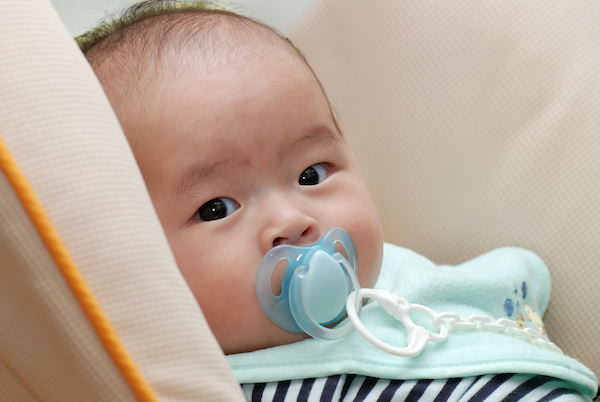
This Brush Up on Oral Health tip sheet offers helpful advice Head Start staff can share with parents about using a pacifier safely and weaning their child from a pacifier.
Sucking is a normal reflex for babies and toddlers. The sucking reflex helps babies and toddlers eat and drink. Some may also want to suck when they are not hungry because it is calming (soothing).
Most children will naturally stop using a pacifier on their own. If a child continues to use a pacifier after 18 months, it can affect the way their teeth bite together and cause problems, such as an overbite. It can also affect the growth of jaws and bones that support the child’s teeth.
Tips for Parents About Pacifier Use
If parents choose to give their baby a pacifier, here is how they can do it safely:
- Wait until breastfeeding is going well (usually after about three to four weeks). If a pacifier is given to a baby before then, nipple confusion may occur and make breastfeeding hard to establish. After a pacifier is introduced, it should never be used to delay or replace regular feedings.
- Let a baby decide whether to use a pacifier. If a baby shows no interest in using a pacifier, do not force it.
- Offer a pacifier at naptime and bedtime. Babies who use a pacifier may be offered a pacifier at naptime and bedtime. Using a pacifier at these times may help lower a baby’s risk for sudden infant death syndrome (SIDS).
- Don’t coat pacifiers. Sucking on a pacifier coated with anything, especially sugar, honey, or jam, increases a baby’s risk for tooth decay.
- Don’t clip, pin, or tie a pacifier to a baby’s clothing. Never tie a pacifier around a baby’s neck or wrist or to a baby’s crib. The string may get tangled around the baby’s neck and make the baby choke.
- Clean pacifiers and replace them regularly. Wash a pacifier that has fallen on the ground or floor with soap and warm water before giving it back to a baby. Parents who clean pacifiers with their mouths pass bacteria that cause tooth decay to the baby. Carrying extra pacifiers is a good idea.
- Check pacifiers for wear and tear. Over time, pacifiers can break down. Look at the rubber every now and then to see if it is discolored, cracked, or torn. If it is, replace it.
Tips to Help Parents Wean Their Child from a Pacifier
If a child shows no interest in self-weaning from the pacifier by 18 months, they may need help to stop. Here are some ideas to share with parents:
- Talk to your child. In a soothing voice, explain why you want them to stop using their pacifier. Tell the child you will help them.
- Suggest other ways your child can self-soothe. Help your child find new calming strategies, such as cuddling with a favorite toy or listening to music.
- Take the pacifier away gradually. Slowly increase the amount of time that your child isn’t using a pacifier. Let your child use it only at certain times, like naptime or bedtime.
- Reward your child. Praise your child and give them non-food rewards when they don’t use a pacifier. Examples of non-food rewards include a star on a calendar or a visit to the park.
- Keep your child busy. If your child uses a pacifier when they are bored, keep their hands busy with fun activities, such as coloring, drawing, or playing with blocks.
To help parents remember these tips, staff can share the Helping Children Stop Using a Pacifier handout. This handout is part of the Healthy Habits for Happy Smiles series, which provides simple tips that parents and pregnant women can use to promote good oral health.
Read more:
Resource Type: Article
National Centers: Health, Behavioral Health, and Safety
Audience: Teachers and Caregivers
Series: Brush Up on Oral Health (BUOH)
Last Updated: March 25, 2025
